Rich Neighbor with Open Doors

It is claimed again and again that in the course of the Macintosh’s development, Apple just resorted to the ideas the research laboratory Xerox PARC had hatched before. Fact or Fiction?
The myth says, Apple CEO Steve Jobs saw Xerox PARC product, such as the GUI, either on a tour or at a trade show. He then used the PARC GUI implementation without permission, to create the Apple Lisa and the original Mac OS / Macintosh GUI.
The myth entwines about a late 1979 visit to Xerox PARC by a group of Apple engineers and executives led by Steve Jobs. Alex Soojung-Kim Pang, author of “Making the Macintosh”, writes:
According to early reports, it was on this visit that Jobs discovered the mouse, windows, icons, and other technologies that had been developed at PARC. These wonders had been locked away at PARC by a staff that didn’t understand the revolutionary potential of what they had created. Jobs, in contrast, was immediately converted to the religion of the graphical user interface, and ordered them copied by Apple, starting down the track that would eventually yield the Lisa and “insanely great” Macintosh. The Apple engineers– that band of brothers, that bunch of pirates– stole the fire of the gods, and gave it to the people.
It’s a good story. Unfortunately, it’s also wrong in almost every way a story can be wrong. There are problems with chronology and timing. The testimony of a number of key figures at Apple suggests that the visit was not the revelation early accounts made it out to be. But the story also carries deeper assumptions about Apple, Xerox PARC, computer science in the late 1970s, and even the nature of invention and innovation that deserve to be examined and challenged.
Alex Soojung-Kim Pang
Let us take a closer look at what happend at Xerox PARC:
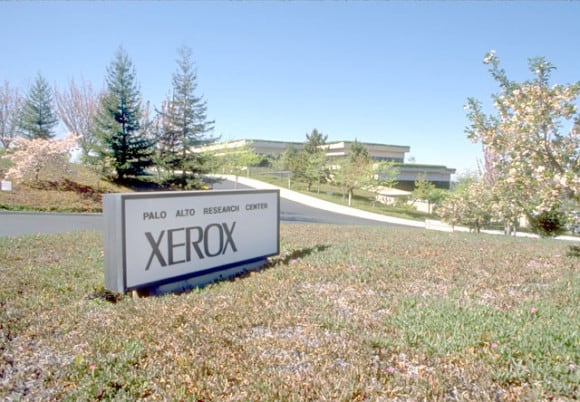
In the Untied States, the brand name “Xerox” denotes photocopying just as “Kleenex” stands for tissues or “Scotch tape” for adhesive film. After all, already in 1950, the Xerox Corp. was the world’s first company to actually transfer the “Xerography” invented by the American law student Chester Carlson into a functional product. Carlson received in 1937 a patent for a process that he called “electrophotography.” On 22 October 1938 followed the premiere in practice: With the help of a metal plate was coated with sulfur and a lamp Chester the lettering “10-22-38 Astoria” on a wax paper.
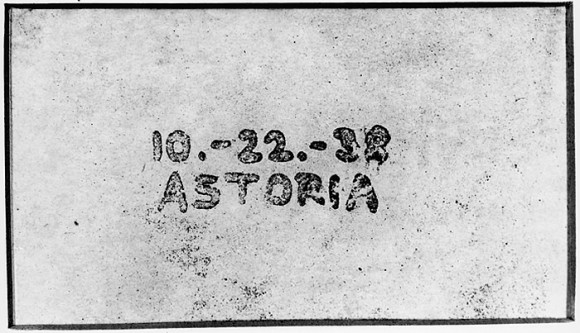
By the end of the sixties, the Xerox management sensed the threat of Japanese companies catching up on Xerox’s technological advantage. Moreover, the Xerox head worried that the “paperless office” might emerge with the following computer generations, in which the Xerox would no longer have a place. Against this background, the Xerox Palo Alto Research Center (PARC) in California was founded in 1970. John Warnock, former researcher in the Xerox PARC and later one of the two founders of Adobe Systems, remembers: “The atmosphere was electric – there was total intellectual freedom. There was no conventional wisdom; almost every idea was up for challenge and got challenged regularly.”
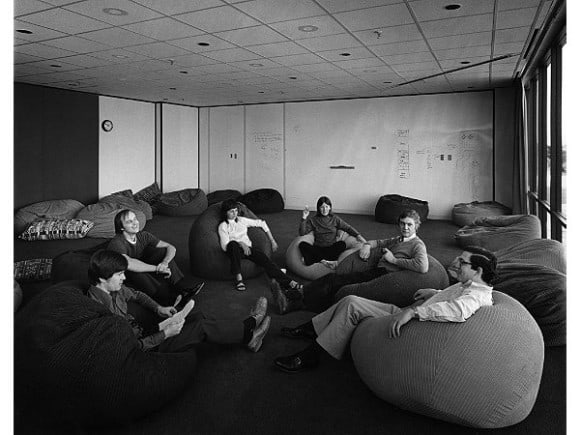
Larry Tessler, who later took part in developing the Macintosh and the Newton PDA at Apple, also enjoyed the liberties the PARC provided in the seventies: “The management said go create the new world. We don’t understand it. Here are people who have a lot of ideas and tremendous talent, [are] young, energetic.” The problem, however, was that the company management at the East Coast of the USA did not [care a straw for] the PARC’s research results unless they were directly involved with photocopiers.
In his TV documentation “Triumph of the Nerds” Robert Cringley is interviewing researchers at the Xerox PARC
Within two years, the researchers at the PARC had designed the Alto, which was something like the first personal computer. The Alto did not feature character-oriented graphics, as did all the other computers of that time, but a bit-oriented version instead. A high quality printer could print exactly what the screen displayed.
A mouse. Removable data storage. Networking. A visual user interface. Easy-to-use graphics software. “What You See Is What You Get” (WYSIWYG) printing, with printed documents matching what users saw on screen. E-mail. Alto for the first time combined these and other now-familiar elements in one small computer.
Developed by Xerox as a research system, the Alto marked a radical leap in the evolution of how computers interact with people, leading the way to today’s computers.
By making human-computer communications more intuitive and user friendly, Alto and similar systems opened computing to wide use by non-specialists, including children.
People were able to focus on using the computer as a tool to accomplish a task rather than on learning their computer’s technical details.
The Computer History Museum about the Xerox Alto
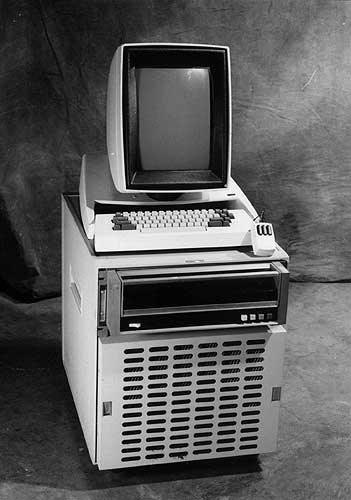
However, this marvelous machine was not freely available on the market. Only small numbers were built initially, but by the late 1970s, about 1,000 were in use at various Xerox laboratories, and about another 500 in several universities. Total production was about 2,000 systems.
The revolutionary Alto would have been an expensive personal computer if put on sale commercially. Lead engineer Charles Thacker noted that the first one cost Xerox $12,000. As a product, the price tag might have been $40,000.
Commercial for the Xerox Alto (1972).
This commercial for Xerox’s Alto computer released in 1972 introduced the world to the first desktop computer with a graphical user interface. Named after Xerox PARC’s home city of Palo Alto, California, the computer introduced the world to the window-oriented mouse and keyboard interface we use today. The Alto also had a distinctive portrait screen — an idea that was well before its time.
The video showed how the computer could revolutionize your office life, with email, word processing and reminders all controlled by a cursor. It also shows the protagonist expressing his thoughts and actions out loud, as if in conversation with the Alto (which seems to be nicknamed “Fred”).
Some Apple engineers were already familiar with PARC, its work, or technologies like the mouse. Bill Atkinson had read about Smalltalk as an undergraduate. Some had worked at PARC: Jef Raskin spent time there during a sabbatical year at Stanford, and had a number of friends who were researchers there. Finally, there were even some Apple employees whose had learned about the mouse while working for Douglas Engelbart at SRI in the 1960s and early 1970s, or Tymshare in the later 1970s.
Read next page: How Apple discovered Xerox PARC

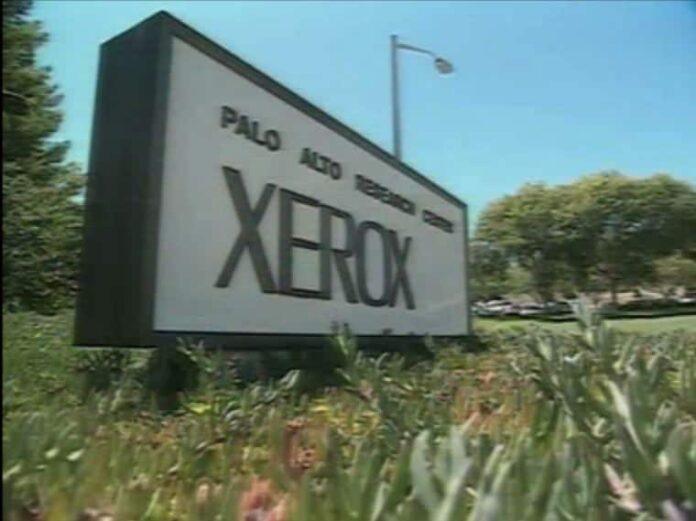

Nice Information on Xerox Printers
Thanks Xerox, you’re the one !
[…] network, data moves explicitly,” Lunt said. “With CCN, the data just moves.” Read more . . . [caption id="" align="alignright" width="300" caption="Image via Wikipedia"][/caption] Updated. Xer…NetworkTopology-Mesh.png" alt="Image showing mesh network layout" width="300" height="227" […]
[…] в дебри истории, «критики» вспоминают, что Xerox Alto (первый ПК с графическим интерфейсом) появился […]
Myth: Xerox management were stupid/did not attempt to commercialize the technology
Fact: The Xerox Star was sold to the public years before the first Apple system with such a user interface: the Lisa.
Myth: Xerox management were stupid not to prosecute Apple earlier
Fact: Xerox was under anti-trust supervision at the time much like AT&T and IBM. It would be very dangerous from them to be seen squashing a competitor. Software patents were generally unenforceable. Apple claimed Xerox only had the ideas and ideas we not copyrightable only the expression of the ideas.
Myth: THe Xerox Star was sold to the public years before the first Apple system with such a user interface: the Lisa.
Fact: the Xerox Star was sold in the second half of 1981. The first Lisa was produced 1982. So it’s month, not years.
[…] Consiglio questo link per un racconto completo dell’incontro tra ingegneri ed executive di Apple (tra cui Steve Jobs) e vari personaggi allo Xerox Parc. […]
Myth: Peter is right
Fact: Peter has no life
[…] https://www.mac-history.net/computer-history/2012-03-22/apple-and-xerox-parc/ […]
Two lines devoted to the 1988 court case. Didn’t wanna quote what the JUDGE said about Apple’s theft of Xerox’s intellectual property, eh? And emphasizing that not a single line of code was stolen? COME ON. The issue is Raskin knowing about Xerox’s work and dragging Jobs along to ensure the (stolen) GUI idea got funded at Apple. This was never about stolen code and the use of “everything” in the title is a silly way to give deniability to one of the greatest thefts of intellectual property in history.
Zimborg said:
Myth: Xerox management were stupid not to prosecute Apple earlier
It’s sad that such implied anti-Apple bias and hatred still exists despite the facts as laid down right before us by the people that were on the scene.
Apple PAID upfront for use of the GUI technology with a very large amount of shares from their IPO, and furthermore vastly improved the technology along the way.
Meanwhile, Xerox’s own workstation offerings at the time are reported to have cost about $16,000 a pop, and would not work without a Server that cost $24,000!!!
And these rabid haters still consider Apple products expensive.
[…] Media Library – PARC, a Xerox companny […]
[…] came on the shoulders of others. The original Mac UI and mouse paradigm having started at Xerox Parc and such… but that is not really relevant. There is no denying that Jobs’ had the ability […]
All .com neuvo riche transplants who screwed palo alto into shallow alto….thanks a##&oles!
[…] https://www.mac-history.net/computer-history/2012-03-22/apple-and-xerox-parc/2 […]
[…] http://www.livescience.com/37944-how-the-human-computer-interface-works-infographics.html https://www.mac-history.net/computer-history/2012-03-22/apple-and-xerox-parc http://www.technologyreview.com/news/534206/a-brain-computer-interface-that-works-wirelessly/ […]
What was told to me, in vague terms, was that Alan Kay was on the team that invented SmallTalk and that Apple hired him because Xerox failed with the Alto and Star systems and that they weren’t interested in going after the lower price home/smaller personal computer market, which is partly why not only Alan Kay left PARC, but Metcalfe ended up leaving to start up 3Com, so since they developed the technology and Xerox didn’t have any plans to do anything with it, they left to go elsewhere to further develop the GUI.
By the time the first GUI came out with Apple, Xerox had nothing on the market because they had already canned the Alto and Star projects, plus they were VERY expensive and the average person couldn’t afford them. Obviously Apple made some improvements and changes to make it more useful. And obviously it stuck and the GUI has just gone through improvements.
Why don’t people say that 3Com stole ethernet from PARC too? Same thing. Metcalfe engineered Ethernet while he was at PARC and he left PARC to start up 3Com. It’s almost the same thing because Alan Kay worked on the early Alto/Star SmallTalk and GUI with PARC and he left to go to Apple to help develop the Mac.
On your youtube you had Xerox PARC Demo for Apple and now it is private. I need it for my NHD project, so I was wondering if you could un-private it or send me an email with the video file in it. My email is yodacrafter2000@gmail.com
sincerely,
David McHugh
[…] is also where Steve Jobs and early Apple engineers took inspiration for aspects of the Macintosh […]
[…] is also where Steve Jobs and early Apple engineers took inspiration for aspects of the Macintosh […]
[…] is also where Steve Jobs and early Apple engineers took inspiration for aspects of the Macintosh […]
[…] [16] https://www.mac-history.net/computer-history/2012-03-22/apple-and-xerox-parc/2 […]
[…] [16] https://www.mac-history.net/computer-history/2012-03-22/apple-and-xerox-parc/2 […]
[…] inventions, but was also a huge influence on the whole computer industry. PARC was arguably the largest influence on Steve Jobs, and shaped the philosophy with which he would run Apple. They themselves are a shining example of […]
[…] https://www.mac-history.net/computer-history/2012-03-22/apple-and-xerox-parc […]
[…] https://www.mac-history.net/computer-history/2012-03-22/apple-and-xerox-parc […]
[…] was introduced in 1981. Although the description, personal Computer, was used in 1972 to indicate Xerox PARC’s Alto, the term PC was largely associated with IBM […]
[…] Apple did not steal the GUI from Xerox, they had given Xerox shares of Apple to see their work. There was no working relationship between Apple and Xerox. No lines of code were stolen. Xerox’s attempt to sue Apple was dismissed by the courts. Apple’s Lisa team was already developing a GUI at the time Apple employees visited Xerox. […]
The concept that apple could use it because Xerox was not using it is ridiculous. So if a movie company is not selling a movie anymore, do you have the right to steal it? Or if someone comes in my home and steals something that I am not using it is okay? The idea that Apple is an honest company is ludicrous. I go into details without getting myself in trouble, but I have a lot of inside information on how they destroyed companies, had their buddies at the FBI railroad people to jail for doing something that could hurt their bottom line, etc. Everyone knows that the hide their money in Scotland so they only pay 1% tax. But to be honest that is they way all big business is, and if anyone thinks they got rich being fair and honest, they are a fool
[…] uno de los primeros ordenadores personales de la historia y Steve Jobs y los ingenieros de Apple se inspiraron en algunas de sus novedades y conceptos, como el uso de una interfaz gráfica, para sus propios […]
[…] de los primeros computadores personales de la historia y Steve Jobs y los especialistas de Apple® se inspiraron en varias de sus noticias y conceptos, como el uso de una interfaz gráfica, para sus propios […]
[…] de los primeros computadores personales de la historia y Steve Jobs y los ingenieros de Apple℗ se inspiraron en algunas de sus noticias y conceptos, como el uso de una interfaz gráfica, para sus propios […]
[…] uno de los primeros computadores personales de la aventura y Steve Jobs y los analistas de ©Apple se inspiraron en varias de sus noticias y conceptos, según el uso de una interfaz gráfica, para sus propios […]
[…] uno de los primeros ordenadores personales de la historia y Steve Jobs y los ingenieros de Apple se inspiraron en algunas de sus novedades y conceptos, como el uso de una interfaz gráfica, para sus […]
[…] uno de los primeros ordenadores personales de la historia y Steve Jobs y los ingenieros de Apple se inspiraron en algunas de sus novedades y conceptos, como el uso de una interfaz gráfica, para sus propios […]
[…] uno de los primeros ordenadores personales de la historia y Steve Jobs y los ingenieros de Apple se inspiraron en algunas de sus novedades y conceptos, como el uso de una interfaz gráfica, para sus propios […]
[…] uno de los primeros ordenadores personales de la historia y Steve Jobs y los ingenieros de Apple se inspiraron en algunas de sus novedades y conceptos, como el uso de una interfaz gráfica, para sus propios […]
[…] uno de los primeros ordenadores personales de la historia y Steve Jobs y los ingenieros de Apple se inspiraron en algunas de sus novedades y conceptos, como el uso de una interfaz gráfica, para sus propios […]
[…] uno de los primeros ordenadores personales de la historia y Steve Jobs y los ingenieros de Apple se inspiraron en algunas de sus novedades y conceptos, como el uso de una interfaz gráfica, para sus propios […]
[…] uno de los primeros ordenadores personales de la historia y Steve Jobs y los ingenieros de Apple se inspiraron en algunas de sus novedades y conceptos, como el uso de una interfaz gráfica, para sus propios […]
[…] uno de los primeros ordenadores personales de la historia y Steve Jobs y los ingenieros de Apple se inspiraron en algunas de sus novedades y conceptos, como el uso de una interfaz gráfica, para sus propios […]
[…] uno de los primeros ordenadores personales de la historia y Steve Jobs y los ingenieros de Apple se inspiraron en algunas de sus novedades y conceptos, como el uso de una interfaz gráfica, para sus propios […]
[…] uno de los primeros ordenadores personales de la historia y Steve Jobs y los ingenieros de Apple se inspiraron en algunas de sus novedades y conceptos, como el uso de una interfaz gráfica, para sus propios […]
[…] uno de los primeros ordenadores personales de la historia y Steve Jobs y los ingenieros de Apple se inspiraron en algunas de sus novedades y conceptos, como el uso de una interfaz gráfica, para sus propios […]
[…] between when the legend of Xerox PARC and Apple and later, Apple and Microsoft growling over who stole what from whom, it started changing. It […]
[…] making a prototype, but the ability to put across a concept in a compelling manner. The ill-fated Xerox PARC, the one lab responsible for some of computer science’s biggest ‘inventions’, is a case in […]
[…] making a prototype, but the ability to put across a concept in a compelling manner. The ill-fated Xerox PARC, the one lab responsible for some of computer science’s biggest ‘inventions’, is a case in […]
[…] https://www.mac-history.net/computer-history/2012-03-22/apple-and-xerox-parc (Steve jobs was a theif?) […]
[…] Did Steve Jobs steal everything from Xerox PARC? […]
[…] Did Steve Jobs steal everything from Xerox PARC? […]
[…] R&D complex in exchange for a chunk of Apple shares. Did Apple steal ideas from Xerox? Debate rages online to this day, but if he did, inviting in Apple was one costly mistake for […]
[…] Mac History: https://www.mac-history.net/compu… […]
[…] the Xerox Star that he had seen, but it was more than that and different. He did not merely copy; he stole from a flailing research project to create a computer that defined the modern interface. Dylan, like Jobs, stole from his Western […]
[…] Mac History: Did Steve Jobs steal everything from Xerox PARC? […]
[…] Mac History: Did Steve Jobs steal everything from Xerox PARC? […]
[…] Xerox ideas of a GUI (Graphical User Interface) from its Xerox Alto computer. Although the whole story is debatable, it is a fact that the Xerox Alto was the precursor of the user interface we still use today, […]
Tour or trade show? He and Apple didn’t steal anything it was part of an investment agreement that xerox greatly benefited from. I don’t understand how even Walter Issacson can also claim Steve “stole” the technology shortly after mentioning how he acquired it in the first place. People love to point the finger.
[…] [1] https://www.mac-history.net/computer-history/2012-03-22/apple… […]
[…] ^ “Did Steve Jobs steal everything from Xerox PARC?”. […]
In every visit Xerox gave a copy of the OS to anyone who wont it, so nither Jobs or Gates stoled anything, only made reverse engennering an made pirate OS, that in fact windows and mac os are.
[…] ^ “Did Steve Jobs steal everything from Xerox PARC?”. […]
[…] utilisés aujourd’hui, et notamment la tablette (il l’appelle Pad dans l’article…). Même s’il y a controverse à ce sujet, le PARC a contribué de façon puissante et concomitante à l’éclosion de nombreuses inventions […]
[…] Picasso. Apple certainly allegedly copied several ideas to incorporate into their products (see Xerox). At the same time, Jobs had publicly accused Microsoft from ripping off the Mac. However the […]
[…] Mac History: https://www.mac-history.net/computer-history/2012-03-22/apple-and-xerox-parc […]